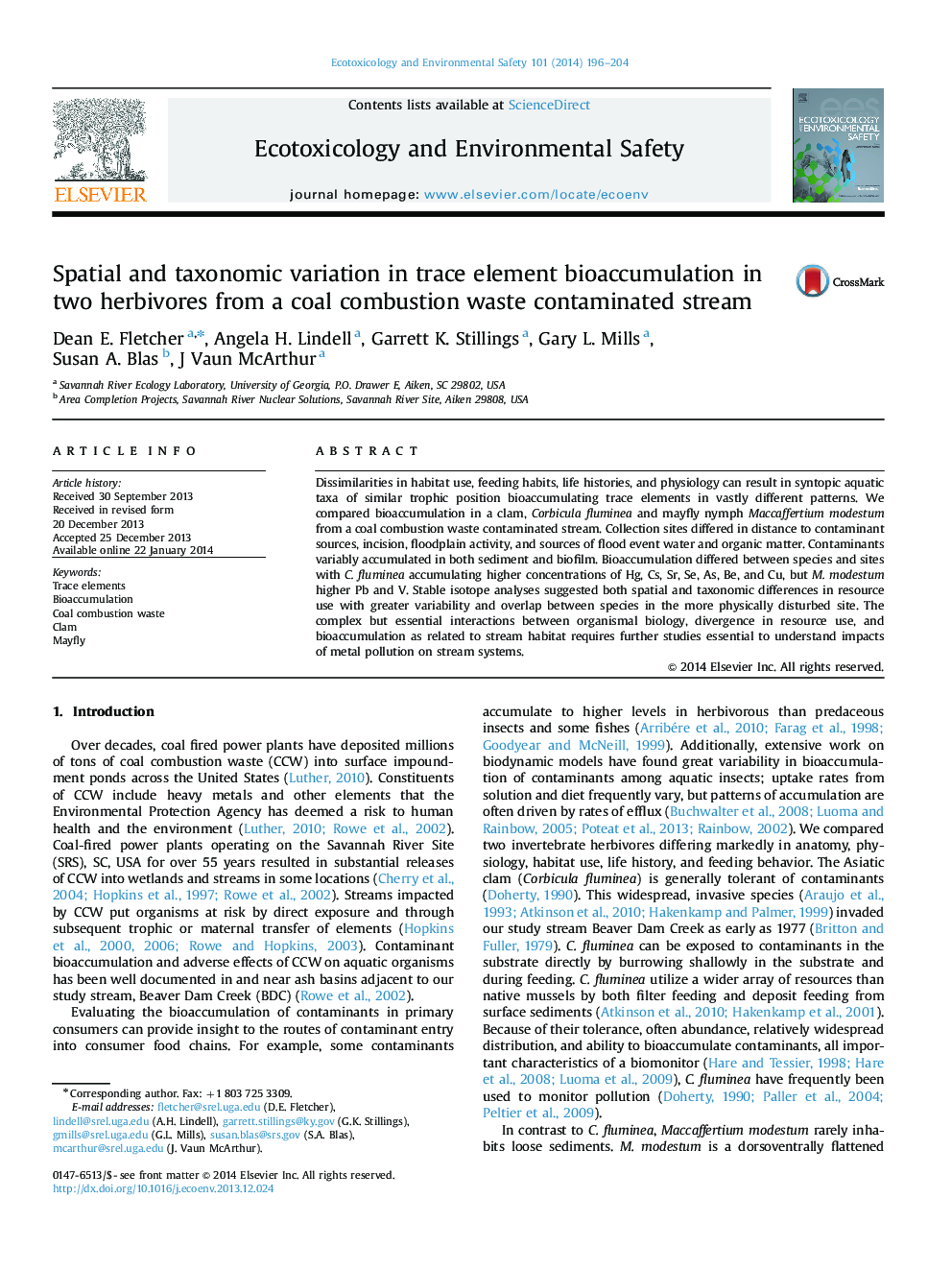| Article ID | Journal | Published Year | Pages | File Type |
|---|---|---|---|---|
| 4420226 | Ecotoxicology and Environmental Safety | 2014 | 9 Pages |
•Element specific spatial and taxonomic variation in bioaccumulation identified.•Based on δ15N, species occupied similar trophic position.•Spatial and taxonomic variation in carbon sources (δ13C) revealed.•Stream habitat type influenced gradient of contaminants below source.•Biofilm accumulated high levels of some contaminants.
Dissimilarities in habitat use, feeding habits, life histories, and physiology can result in syntopic aquatic taxa of similar trophic position bioaccumulating trace elements in vastly different patterns. We compared bioaccumulation in a clam, Corbicula fluminea and mayfly nymph Maccaffertium modestum from a coal combustion waste contaminated stream. Collection sites differed in distance to contaminant sources, incision, floodplain activity, and sources of flood event water and organic matter. Contaminants variably accumulated in both sediment and biofilm. Bioaccumulation differed between species and sites with C. fluminea accumulating higher concentrations of Hg, Cs, Sr, Se, As, Be, and Cu, but M. modestum higher Pb and V. Stable isotope analyses suggested both spatial and taxonomic differences in resource use with greater variability and overlap between species in the more physically disturbed site. The complex but essential interactions between organismal biology, divergence in resource use, and bioaccumulation as related to stream habitat requires further studies essential to understand impacts of metal pollution on stream systems.
